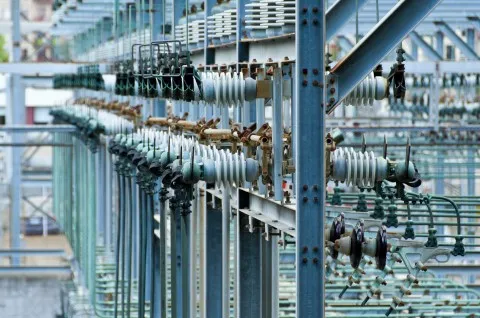
The era of battery-based energy storage is upon us
Will the traditional utility business model be disrupted?
EY reported that in a series of tweets in early March, Tesla founder, CEO and Chairman Elon Musk made a dramatic offer to help address the issues bedeviling South Australia’s electricity grid: he offered to install 100MW of battery storage within 100 days — or the system would be free.
This led to talks between Musk and South Australia’s Premier, and with Australia’s Prime Minister Malcolm Turnbull. At the time of writing, it was unclear whether the offer would be taken up, and there are serious questions as to whether such a system would be an appropriate solution to the blackouts plaguing the Australian state.
But the attention that Musk’s offer generated is testament to the increasingly important role that battery storage, at scale, is playing in modern electricity systems.
Here's more from EY:
Storage technology is the vital missing element in the struggle to enable the transition to clean energy, allowing grids to accommodate ever-growing volumes of intermittent generation and transforming the economics of renewable energy systems. But, along the way, the growth of battery storage promises to transform power markets, accelerate disruption of the utility business model and challenge regulators to rethink how they oversee generation, transmission and distribution.
The growing penetration of batteries is, essentially, a solution to a problem that dates back to the construction of the first electricity grids. “The electricity supply chain is the longest supply chain in the world with almost no ability to store the product,” says Matt Roberts, executive director of the Washington, DC-based Energy Storage Association (ESA). “That means we have scaled everything to meet the absolute peak of demand — it’s an incredibly costly and inefficient way to build a network.”
The inability to store surplus power (beyond the limited capacity of older storage technologies such as pumped hydro systems) is becoming a more pressing problem with the greater penetration of wind and solar technologies. Solar output, whilst relatively predictable, dips in cloudy conditions, whilst local wind speeds are hard to predict with confidence more than a few days into the future. In addition, thermal power plants currently play an important role in balancing generation and load to maintain the frequency of power grids within a constant range, which protects electric equipment. Renewable energy generation is unable to provide the on-demand balancing power needed for grid stability.
This means that battery systems — predominantly, to date, using the lithium-ion technology seen in electric vehicles — have multiple uses, and multiple market needs they can address. “The opportunity for battery storage exists in all areas of the utilities value chain — in generation, transmission and distribution, as well as on the consumer side, behind the meter,” says Manish Kumar, managing director of Arlington, Virginia-based AES Energy Storage, an arm of power company AES Corporation.
Thomas Christiansen, Associate Director at EY in Stuttgart, Germany, describes a hierarchy of applications that will become progressively more commercially attractive as battery costs fall. Islanding uses batteries alongside renewables in isolated grids, displacing expensive small-scale fossil fuel generation using diesel or fuel oil. Grid balancing provides short-term supply (or demand) to keep electricity grids in equilibrium, and helps to reduce the need for investment in transmission and distribution networks.
Peak shaving reduces demand for expensive power from the grid at peak times. As batteries get cheaper, it becomes economical to use them for energy load shifting, charging the batteries when grid power is cheap and discharging them when it is expensive. These techniques become economic first for commercial users with high peak charges but moderate overall use, followed by large industrial users with high energy demand.
The behind-the-meter market pairs on-site batteries and renewable systems, allowing both commercial and industrial and domestic users to consume more of the power they generate by, for example, using stored solar power into the evening.



















 Advertise
Advertise







